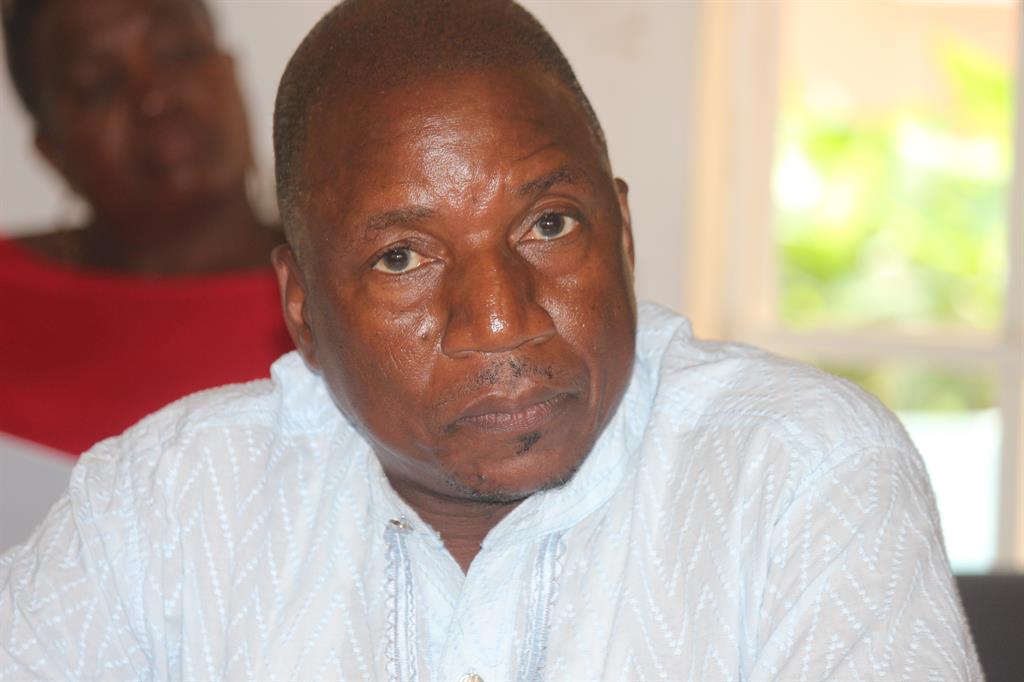Low Orange River a disaster
A shortage of water for irrigation would cripple the cultivation of grapes, dates and vegetables along the Orange River.
Low water levels in the lower Orange River could have severe consequences for grape farmers in the area, such as production losses, labour cutbacks and eventually dwindling revenues.
Agriculture ministry executive director Percy Misika says the ministry is aware of the grape farmers' concerns. He says a lack of water for irrigation would be a heavy blow for the cultivation of grapes, dates and vegetables along the river.
“Grapes are a labour-intensive crop, hence during critical shortages of water ORIP is expected to lay off some workers.”
ORIP employment statistics indicate that in 2016 there were 76 permanent employees and 161 temporary employees working at the ORIP Green Scheme, while last year there were 74 permanent employees and 773 temporary employees.
According to Misika 90% of farmers in the Aussenkehr valley are involved in grape production for the European market.
“In good production years, revenue increases significantly. Therefore, during times when production declines, it is expected that the revenues will also decrease, eventually affecting the next production in terms of cash flow to cater for other essential farming services.”
During the 2017/18 financial year 116 302 cartons of grapes were produced by the ORIP Green Scheme.
Misika explained that the regulation of water flow in the Orange River is mainly driven by releases of water from Vanderkloof Dam, situated upstream in South Africa.
The ministry has two water-level monitoring stations on the lower Orange River, namely at Blouputs and Sendelingsdrift.
“The South African water authorities were notified of the critically low water flow in the lower Orange River. Currently, additional water is being released from Vanderkloof Dam and significant water flow reached Aussenkehr on 19 February,” he said.
Vanderkloof Dam is about 1 400 km upstream from Aussenkehr.
“The situation is aggravated by high evaporation losses, extremely unpredictable dry climatic conditions and possible unaccounted for or illegal offtakes by both Namibian and South African users.”
The ministry was trying to find lasting solutions to ensure sustainable, equitable utilisation and management of the shared river, he said.
Such measures are enforced by all riparian states through organs such as the Orange-Senqu River Commission (ORASECOM) which was established between Lesotho, Botswana, Namibia and South Africa; and the Permanent Water Commission (PWC) between South Africa and Namibia.
Misika said at independence, Namibia used about 50 million cubic metres of water from the Orange River per year.
At the moment 125 million cubic metres are allocated to Namibia for irrigation.
It is estimated that by 2030, Namibia will require 303 million cubic metres per year for irrigation.
“There is no agreement with South Africa on the allowable permits. The two governments are still working to the principle of water cooperation along the lower Orange to allow for water sharing and future infrastructure development,” Misika said.
There is a working group, referred to as the Orange River Systems Operating Forum, which meets every year to discuss the operation and release of water from the Vanderkloof Dam for downstream users.
ELLANIE SMIT
Agriculture ministry executive director Percy Misika says the ministry is aware of the grape farmers' concerns. He says a lack of water for irrigation would be a heavy blow for the cultivation of grapes, dates and vegetables along the river.
“Grapes are a labour-intensive crop, hence during critical shortages of water ORIP is expected to lay off some workers.”
ORIP employment statistics indicate that in 2016 there were 76 permanent employees and 161 temporary employees working at the ORIP Green Scheme, while last year there were 74 permanent employees and 773 temporary employees.
According to Misika 90% of farmers in the Aussenkehr valley are involved in grape production for the European market.
“In good production years, revenue increases significantly. Therefore, during times when production declines, it is expected that the revenues will also decrease, eventually affecting the next production in terms of cash flow to cater for other essential farming services.”
During the 2017/18 financial year 116 302 cartons of grapes were produced by the ORIP Green Scheme.
Misika explained that the regulation of water flow in the Orange River is mainly driven by releases of water from Vanderkloof Dam, situated upstream in South Africa.
The ministry has two water-level monitoring stations on the lower Orange River, namely at Blouputs and Sendelingsdrift.
“The South African water authorities were notified of the critically low water flow in the lower Orange River. Currently, additional water is being released from Vanderkloof Dam and significant water flow reached Aussenkehr on 19 February,” he said.
Vanderkloof Dam is about 1 400 km upstream from Aussenkehr.
“The situation is aggravated by high evaporation losses, extremely unpredictable dry climatic conditions and possible unaccounted for or illegal offtakes by both Namibian and South African users.”
The ministry was trying to find lasting solutions to ensure sustainable, equitable utilisation and management of the shared river, he said.
Such measures are enforced by all riparian states through organs such as the Orange-Senqu River Commission (ORASECOM) which was established between Lesotho, Botswana, Namibia and South Africa; and the Permanent Water Commission (PWC) between South Africa and Namibia.
Misika said at independence, Namibia used about 50 million cubic metres of water from the Orange River per year.
At the moment 125 million cubic metres are allocated to Namibia for irrigation.
It is estimated that by 2030, Namibia will require 303 million cubic metres per year for irrigation.
“There is no agreement with South Africa on the allowable permits. The two governments are still working to the principle of water cooperation along the lower Orange to allow for water sharing and future infrastructure development,” Misika said.
There is a working group, referred to as the Orange River Systems Operating Forum, which meets every year to discuss the operation and release of water from the Vanderkloof Dam for downstream users.
ELLANIE SMIT




Comments
Namibian Sun
No comments have been left on this article